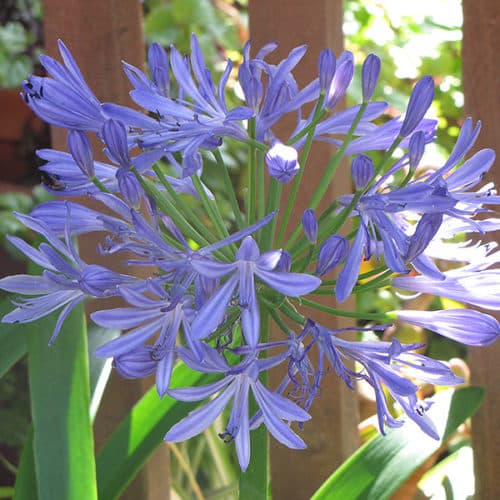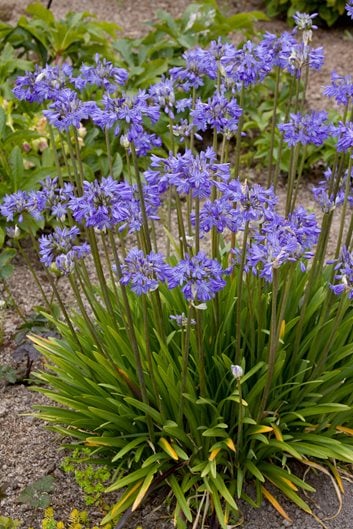Typical Agapanthus Issues and How to Solve Them
Typical Agapanthus Issues and How to Solve Them
Blog Article
Releasing the Secret to Effective Agapanthus Growing: Advice for a Flourishing Yard
In the realm of gardening, growing agapanthus successfully requires a strategic strategy that includes different facets of plant care. By recognizing the nuances of agapanthus farming, one can produce an atmosphere where these plants prosper and grow abundantly.
Growing Agapanthus: Best Practices
When growing Agapanthus, appropriate soil preparation is crucial for making certain effective development and growth of these gorgeous blossoms. Agapanthus, commonly referred to as Lily of the Nile or African lily, thrives in well-draining dirt with a slightly acidic to neutral pH degree - Agapanthus. Prior to planting, it is important to modify heavy clay dirts with raw material such as compost or peat moss to improve water drainage and provide important nutrients for the plants
To grow Agapanthus, select an area that receives complete sunlight to partial shade, as this will advertise healthy growth and bountiful flowering. Dig a hole twice the diameter of the plant's origin sphere and put the Agapanthus at the exact same deepness it was formerly expanding. Delicately backfill the opening with soil, pushing down firmly to eliminate any kind of air pockets around the roots.
Water the recently planted Agapanthus completely and continue to keep the dirt evenly moist, especially during the plant's energetic growing season. Agapanthus. Using a well balanced plant food once a month can additionally support the plant's growth and blooming. By complying with these best techniques for growing Agapanthus, you can develop a stunning display screen of these exciting blossoms in your garden
Suitable Soil Issues for Agapanthus
For ideal growth and blooming success of Agapanthus plants, making certain the dirt problems are excellent is critical. Agapanthus prefers dirt that is rich in nutrients, so incorporating a balanced plant food during the growing period can advertise healthy development and vibrant flowers.

Watering and Feeding Tips
To guarantee healthy development and lively blossoms, correct watering and feeding techniques are important for effective Agapanthus growing. Agapanthus plants gain from routine watering, especially throughout the expanding period. It is suggested to water deeply as soon as a week, making sure the soil is wet but not waterlogged. During warm climate or in pots, even more frequent watering may be required to stop the dirt from drying out completely.
When it involves feeding Agapanthus, a balanced plant food with equal parts nitrogen, phosphorus, and potassium can be applied in the spring to advertise healthy growth and flowering. Slow-release plant foods are optimal for providing nutrients progressively over an extended period. Avoid over-fertilizing, as this can cause too much foliage development at the cost of blooms.
Furthermore, incorporating natural matter like garden compost into the soil can boost nutrient levels and improve soil structure, assisting in the overall wellness of the Agapanthus plants. By complying with these watering and feeding ideas, gardeners can guarantee their Agapanthus plants thrive and create spectacular display screens of blossoms.
Trimming and Deadheading Methods
Correct pruning and deadheading methods play a crucial function in maintaining the wellness and visual appeals of Agapanthus plants, complementing the necessary practices of watering and feeding for successful growing. Pruning Agapanthus entails removing spent flower heads, dead or yellowing fallen leaves, and total shaping of the plant to promote far better growth. Deadheading, the process of eliminating faded blossoms, not only enhances the plant's appearance but likewise motivates more flowering.
When deadheading Agapanthus, it is suggested to snip off the flower stem at the base utilizing sharp, tidy shears. This process redirects the plant's power from seed production back right into origin and foliage growth, promoting a healthier and much more robust plant. Routine deadheading can extend the growing period of Agapanthus and stop self-seeding, which can bring about overcrowding.
In regards to trimming, Agapanthus typically take advantage of a light trim after blossoming to clean the plant and urge fresh growth. Reducing the spent flower stems and getting rid of any dead or broken foliage aids keep the plant's vitality and general appearance. Nevertheless, it is vital to stay clear of reducing into the crown of the plant, as this can damage its wellness.

Protecting Agapanthus From Pests and Diseases
Applying reliable bug and illness administration techniques is essential to protecting the health and wellness and vitality of Agapanthus plants in cultivation. Agapanthus are usually hardy plants, however they can still succumb to various bugs and illness if not effectively looked after. One typical insect that affects Agapanthus is the Agapanthus borer, a caterpillar that passages right into the plant, creating damage to the fallen leaves and blossoms. To avoid infestations, routine examination of the plants is crucial. If borers are discovered, they can be manually eliminated, or insecticidal soap can be used as a control action.
In enhancement to bugs, Agapanthus are susceptible to diseases such as go to these guys root rot Related Site and fungal leaf spots. By remaining cautious and resolving bug and disease issues quickly, garden enthusiasts can assist their Agapanthus flourish and grow.

Final Thought
Finally, successful growing of agapanthus requires appropriate growing techniques, suitable soil problems, appropriate watering and feeding, regular trimming and deadheading, and defense from parasites and illness. By adhering to these tricks and tips, garden enthusiasts can guarantee a growing yard loaded with beautiful agapanthus blossoms. Agapanthus. Remember to keep consistent treatment and interest to detail to advertise the health and longevity of these sensational plants
When growing Agapanthus, correct soil prep work is necessary for guaranteeing effective growth and advancement of these lovely blossoms.Water the freshly planted Agapanthus completely and proceed to maintain the soil evenly moist, particularly during the plant's active growing season.For optimal growth and blooming success of Agapanthus plants, making certain the dirt problems are excellent is crucial. When transplanting or planting Agapanthus, ensure the soil is well-prepared to read this article supply the needed foundation for the plants to establish themselves successfully. One typical bug that impacts Agapanthus is the Agapanthus borer, a caterpillar that tunnels right into the plant, creating damages to the fallen leaves and flowers.
Report this page